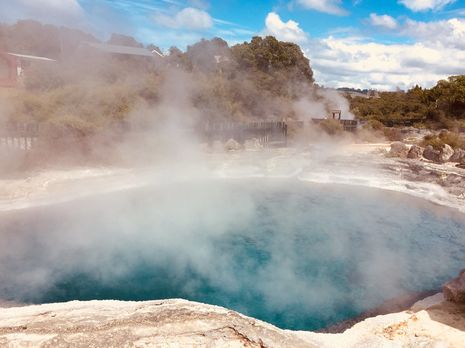The new face of probiotics
A dive into microbiome-focused skincare

Venturing into Boots’ skincare aisles, you’re surrounded by towering shelves stacked with products promising to cure all your skin concerns. Recently, more and more products have claimed to do so with elusive ingredients and patented complexes that we are told target our skin’s microbiome. But what do we mean by our skin’s microbiome? Can we trust these claims, or are they just a clever marketing strategy?
The skin microbiome
A ‘microbiome’ refers to any community of microorganisms present on a surface. . The gut microbiome is arguably the best-studied microbiome in humans and presents many links to human health, disease, and immunity. Recent therapeutic advancements that utilise or manipulate the gut microbiome have proven promising in multiple areas, from improving the efficacy of cancer treatments to treating antibiotic-resistant Clostridium difficile infections. Such exciting advancements with the gut microbiome have led to suggestions that it could be possible to target the skin microbiome topically to improve skin conditions and treat skin problems.
“Therapeutic advancements that utilise or manipulate the gut microbiome have proven promising in multiple areas”
Probiotics in skincare
Probiotics are live microorganisms that confer a health benefit to the person taking them, and have cropped up in the ingredient lists of many skincare products, often listed under ‘ferments’ or ‘filtrates’. A common probiotic found in skincare is Streptococcus thermophilus, a bacterium commonly found in dairy products. S. thermophilus has been shown to increase ceramide production in the skin when applied in a moisturiser. Ceramides are lipids that are important for barrier function; they help to form a protective layer that reduces water loss and protects against environmental irritants. Therefore, increased ceramide production can be beneficial for skin irritation and dryness. Furthermore, the topical application of S. thermophilus may be a useful tool in treating acne. Acne vulgaris is a chronic inflammatory skin condition associated with the bacterium Cutibacterium acnes, the abundance of which can be reduced in the presence of phytosphingosine, a ceramide building block that exhibits antimicrobial activity against C. acnes bacteria.
"Vitreoscilla filiformis has been found in hydrothermal vents and spa waters, which are known for their beneficial effects on the skin”
How La Roche-Posay claims to target the skin microbiome
The L’Oréal group, which owns La Roche-Posay, uses the bacterium Vitreoscilla filiformis (VF) as a probiotic. VF has been found in hydrothermal vents and spa waters, which are known for their beneficial effects on the skin. VF used by La Roche-Posay is referred to as Aqua Posae (AP). Multiple studies have demonstrated beneficial outcomes associated with the topical application of VF to the skin, including protection from UV-induced sunburns and anti-inflammatory effects. However, it is important to consider that some studies assessing these benefits used models that poorly recapitulate the biology of skin, such as using a single layer of cells in a dish. The use of models that better capture the likeness of human skin can provide more reliable conclusions, but it is important to acknowledge that even these models are not perfect.
Microresyl (M), a trademark of La Roche-Posay, is a natural ingredient from a root extract commonly used in traditional Chinese medicine and helps to rebalance the skin’s microbiome. Microresyl acts as a microbiome manipulator by helping to limit the growth of Staphylococcus aureus, a bacterium often linked with the inflammatory condition eczema. VF and Microresyl together form the AP+M technology that La Roche-Posay claims to ‘rebalance the microbiome and reduce the frequency of dry skin flare-ups’.
A master marketing ploy?
Probiotics and other microbiome-targeting ingredients incorporated into skincare formulas undoubtedly enable companies to justify a higher price tag with potentially sensationalised claims to ‘bolster your skin’s moisture barrier’ and to ‘rebalance the microbiome’. Evidence does exist to support these claims, but with currently limited research into the skin microbiome and the need for better models, there is plenty of room for development. Overall, it seems that microbiome-focused skincare presents a novel and exciting approach to targeting skin concerns, but it should not be seen as a magic bullet that can target all skin-related woes.
 News / Caius mourns its tree-mendous loss23 December 2025
News / Caius mourns its tree-mendous loss23 December 2025 Comment / Yes, I’m brown – but I have more important things to say22 December 2025
Comment / Yes, I’m brown – but I have more important things to say22 December 2025 News / Cambridge welcomes UK rejoining the Erasmus scheme20 December 2025
News / Cambridge welcomes UK rejoining the Erasmus scheme20 December 2025 News / CUP announces funding scheme for under-represented academics19 December 2025
News / CUP announces funding scheme for under-represented academics19 December 2025 Interviews / Politics, your own way: Tilly Middlehurst on speaking out21 December 2025
Interviews / Politics, your own way: Tilly Middlehurst on speaking out21 December 2025










